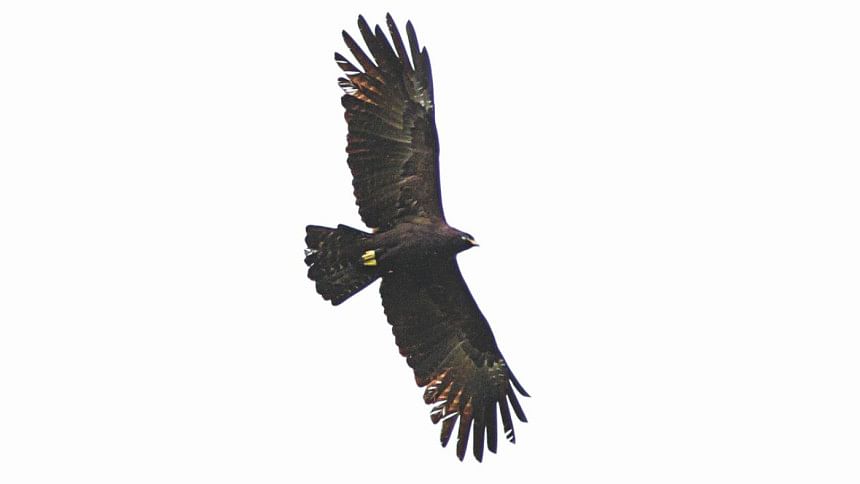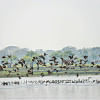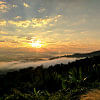The silent spirit of the skies

We awoke before sunrise to the sound of rain and the smell of wet earth, slightly worried about the trail that we were taking for the next five days. We would have no cell phone coverage or communication with the outside world, and it's hazardous to hike when the trails are slippery and often steep, especially with our heavy equipment.
With field supplies, water and possible risks on our minds, we set off to explore the southern part of Bandarban in order to find rare hill birds. The trail had not been used last summer and vegetation on both sides had reclaimed the paths created by humans. Everything seemed so perfectly placed, as if nature was rearranging its realm and we were intruders breaking the order. We did so in many ways -- we stepped on the wet grasses as they were cherishing descending clouds and last night's rain on their blades, our footsteps on the soft soil created uneven holes and festival of leeches that fed on our blood.
The unexpected November rain allowed the clouds to meet the mist hidden behind the ridges. All I wanted was an empty mind like a city street at midnight, so I could embrace this beauty and vastness with all I have. The morning was still sedentary - no wind, no track, no bird, only scattered clouds on treetops, freed from the sky, portraying the power of the universe.
We headed south, with a wall of vegetation on one side and a hilly landscape on the other. We could barely see beyond a few hundred metres, the horizon obscured by clouds, mist and a mild drizzle. Above a green ridge, a flock of aerial feeders such as Swallows, Needletails and Swifts were active, constantly hawking for insects. I wondered if they ever tire of their continuous flight to survive
The intensity of the rain increased, we stopped and bloomed opened our umbrellas. I sat on a log and watched the raindrops crashing on a taro leaf. Soon after, the rain stopped, leaving trails became extremely slippery and unsafe.
As I was thinking of our next move and starting to walk again, I saw a dark object appear from the left corner of my eye. I could not see what it was as it vanished into the clouds in seconds. The view was thrilling but unfulfilling. Then suddenly it emerged again just above us, spreading its long, broad wings and disappearing amidst the clouds like a ghost. It did not make any noise, nor beat its wings, as if gliding in slow motion.
We soon realised that it was the mighty Black Eagle -- the silent spirit of the skies.
The Black Eagle first recorded appearance was in the Chittagong Hill Tracts (CHT) in 2014. Since then it has been regularly spotted in the region, possibly breeding.
This huge raptor prefers slopes, hilly countries, and areas where there is forest cover to feed on small mammals, reptiles and also other birds. The global population of the Black Eagle is estimated to be around 10,000, but its population is declining owing to ongoing deforestation throughout its range.
Recent records of the Black Eagle from the Sangu Valley in the CHT indicate that the area still holds extensive tropical evergreen forests. These habitats need long-term protection as these are the last of our old-growth forests where human and nature still coexist.
We cannot afford to lose more.

 For all latest news, follow The Daily Star's Google News channel.
For all latest news, follow The Daily Star's Google News channel. 








Comments